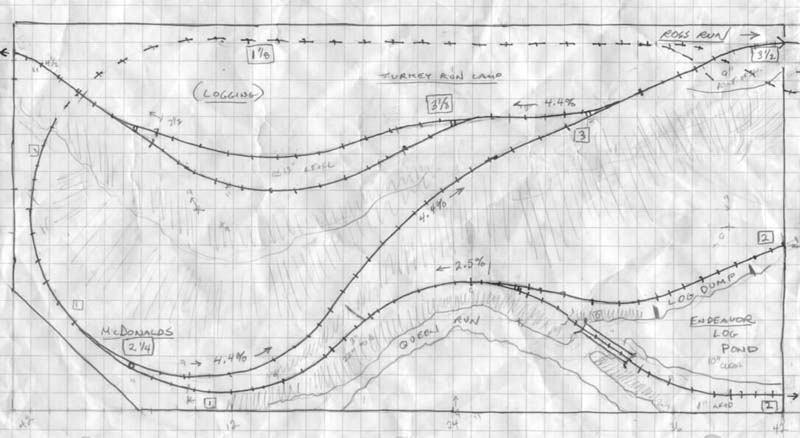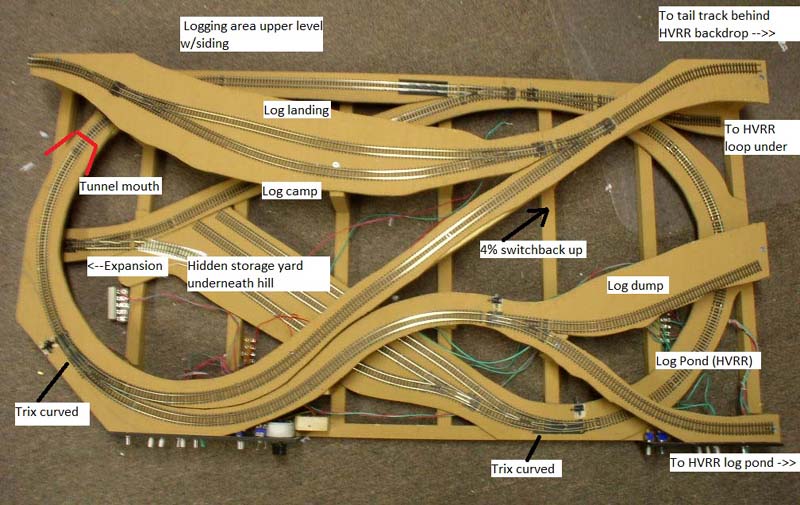I did my Ross Run module as a second 'cookie cutter' add-on to the Hickory Valley; the HVRR was built in 1976 as a cookie-cutter, this I've done lately as an add-on to showcase the Atlas Shay on a stand-alone logging module as well as an add-on. It was at Bedford this year. Primary design criteria was a steep switchback with the gears to the outside headed uphill. And I needed all the little staging tracks I could fit to hold my abundance of N geared steam equipment. Oh, and a reverse loop to the next module concept. And continuous run connections to the HV.
On a logging railroad I don't use roadbed. I'll hint a little ballast on one main track but the rest will be in the dirt.
This is only 21x42 inches in N. Original plan:

Constructed:

I've got a 'lot of crap' on a tiny module, including a lot of extra wiring for the switch machines, reverse loops, etc. It also had to be built like a tank to get hauled around as a portable in the back of the pickup. My 'cheat' is that I have a wood shop with an overhead radial saw plus a jigsaw, I can cut custom cross-sections out of pine & plywood all day. It's a cookie-cutter PLUS a straight single-piece spline reinforcement between risers under the roadbed, individual pieces keep the roadbed flat for sure. Glued & screwed. The problem with cookie cutter only on N & Z is that the plywood roadbed is narrow - really too narrow for much strength. If the grid is much tighter than 6" you can't work in it. So some kind of reinforcement is necessary between risers if you want a really straight and solid roadbed.
Visible track is Peco C55 with a couple C80 switches spliced in. It's not Z but the working dimensions are the same, as well as an overriding concern for both portability and damage/warp resistance. The HVRR built in '76 hasn't moved a bit, has been dropped down the stairs, has been all over on train shows, and still is in relatively good shape for a now-vintage N layout.
Both modules have custom-plywood slide-over cases that bolt right onto the benchwork.